Last Updated: February 14th, 2020
Every portrait photographer is going to have that one lens that they really enjoy working with. While we try not to get too caught up in emphasizing the importance of gear, in the case of portrait photography – having access to a camera lens with the right focal length and wide aperture will make a world of difference.
In this article, we will be talking about our favorite lens for portraits: the Canon 85mm f/1.2 II lens. We’ll discuss in depth the benefits it offers and showcase some sample images, so you can see just how a lens at this focal length and wide aperture really look.
Of course, given this is a subjective topic, we’ll also take a look at a few other lenses to showcase different focal lengths available. As we’ve learned, there is no “one size fits all” option. If you are looking to purchase a portrait photography lens, this added insight will help you to better shape your understanding of lenses available for this purpose.
First – the optimal focal length
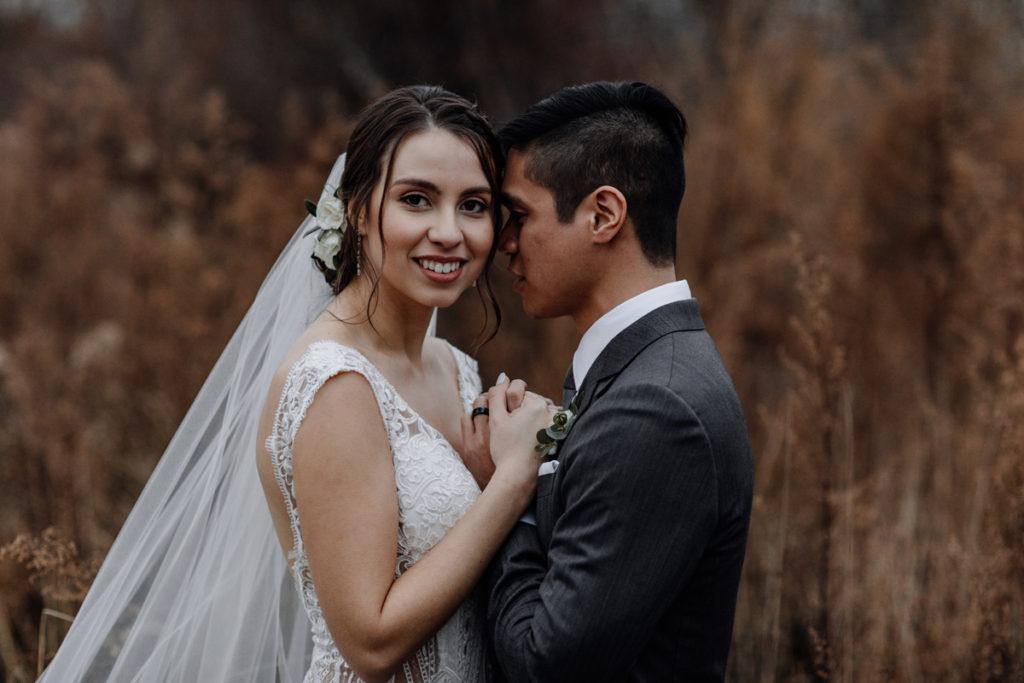 As photographers who have the tendency to photograph everything and anything, it can be strange to step back and really think about how we tend to use different pieces of equipment for different jobs. Thinking about it like this, our camera gear (lenses included), are just tools like a hammer, screwdriver, and wrench are to someone building a house.
As photographers who have the tendency to photograph everything and anything, it can be strange to step back and really think about how we tend to use different pieces of equipment for different jobs. Thinking about it like this, our camera gear (lenses included), are just tools like a hammer, screwdriver, and wrench are to someone building a house.
Despite having many great lenses, our 85mm lens is most commonly used for capturing portraits. It’s not to say that other lenses aren’t used (and there will be more on these in a bit), but it is, at least, our favorite for this purpose.
There are really two primary reasons why we settle on 85mm being a great focal length for portraits. They are:
- The image compression is very noticeable and beautiful
- A photographer does not need too much space to work with it
At its core, we really tend to judge our equipment by our ability to use it with ease and the resulting images it produces. Sure, we could go deep into the tech world to look at every micro detail of the lens, but it doesn’t really serve us much of a purpose. More importantly, it doesn’t serve our paying clients much of a purpose either as they care most about having great looking photos – not so much the equipment it’s being produced with.
Related: The Ultimate Couples Portrait Photography Guide
Second – defining the best aperture
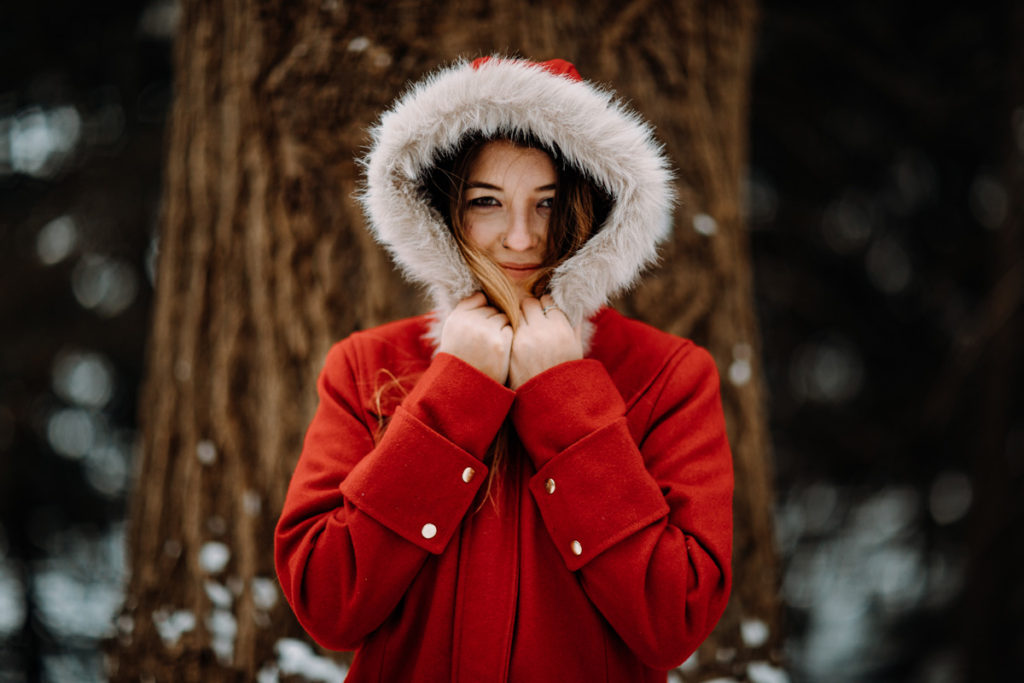 Having a camera lens that is able to be shot wide open at low f-stops is one of the most significant keys to unlocking great portrait photos. While we commonly think that you don’t need high end gear necessarily to take great photos, there is no doubt in this particular area that – you get what you pay for.
Having a camera lens that is able to be shot wide open at low f-stops is one of the most significant keys to unlocking great portrait photos. While we commonly think that you don’t need high end gear necessarily to take great photos, there is no doubt in this particular area that – you get what you pay for.
Many more expensive prime lenses, by a variety of lens makers, have the ability to drop down as low as f/1.0. It is for this reason that many photographers buy them – ourselves included. Being able to take photographs at this level makes it easier to get a proper exposure without having to turn up the ISO (which results in more grain in the images) as every stop lower you can get means you get one more stop of extra light.
The reason for this is simple: low f-stops = a wider aperture. The wider the aperture = the more light that can get into the camera sensor naturally.
With this said, shooting at the widest aperture often isn’t the best choice as it can be difficult to focus on pretty much any lens. We only tend to shoot at f/1.2 on our Canon 85mm f/1.2 lens in the perfect light conditions as can be found during Golden Hour, or when shooting with flash sometimes (as the flash will “freeze” the subject and allow us to grab focus).
From all the time we’ve spent shooting with this lens, our sweet spot for the best portraits tend to be around f/2.0 – f/2.4. This allows us to create the background separation and blur we all dream of as portrait photographers without missing focus.
For more photo education: 101 Digital Photography Tips
85mm focal length + f/1.2 starting aperture = the Canon 85mm f/1.2 II lens
The Canon 85mm f/1.2 II lens is really the perfect combination of focal length and aperture capabilities for a portrait photographer. As a high end lens, it also brings with it mechanical inner workings that enable it to produce beautiful and rich images. It’s for these combined reasons and our personal experience shooting with it for several years that we’ve come to be comfortable recommending it for this reason.
You can read more about the Canon 85mm f/1.2 II lens in our review.
We also mention it as being one of the best Canon lenses for wedding portrait photographers, too.
Other Portrait Lens Options for Non-Canon Shooters and Budget Photographers
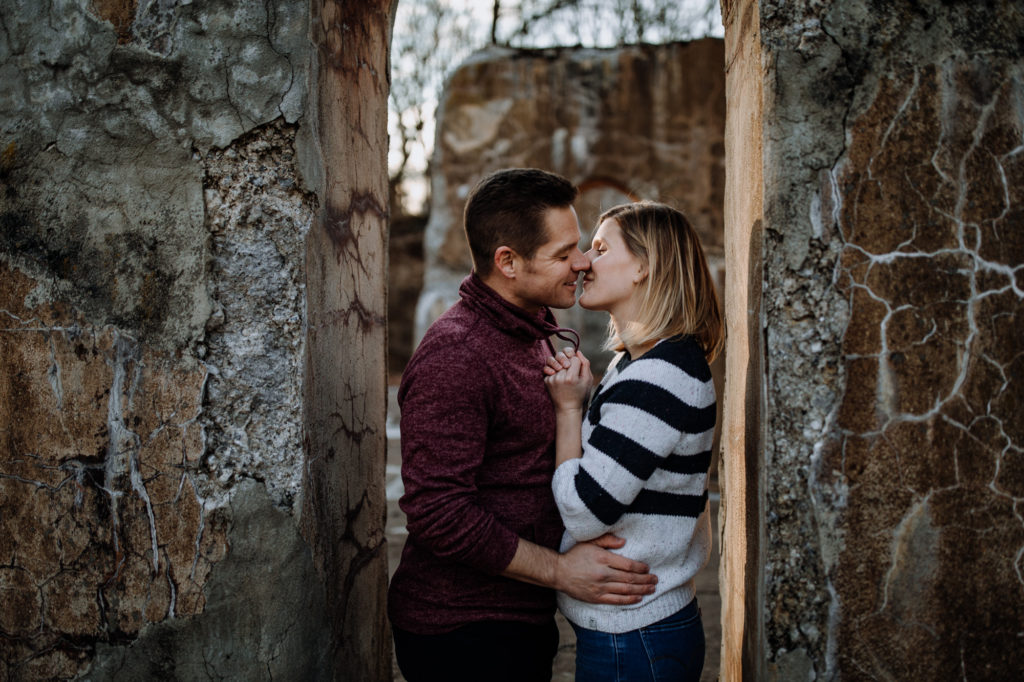 While we’ve made it clear our preferred portrait lens is the Canon 85mm f/1.2 II lens, we understand not everyone will be able to use this lens themselves. It’s price can be restrictive – particularly if you are on a budget or a hobbyist.
While we’ve made it clear our preferred portrait lens is the Canon 85mm f/1.2 II lens, we understand not everyone will be able to use this lens themselves. It’s price can be restrictive – particularly if you are on a budget or a hobbyist.
There are some more affordable lens options out there, and while the quality and capabilities may not be quite as high as this, these are still great lenses in their own right.
Additionally, we totally understand that not everyone viewing this post will be shooting on Canon equipment. We have identified some comparable lenses by other big name camera manufacturers that you can check out as fairly similar alternatives.
Budget 85mm Canon lenses:
Non-Canon 85mm lenses:
- Sigma 85mm f/1.4 DG HSM Art Lens
- Meike 85mm F/1.8 Full Frame Auto Focus Prime Lens
- Sony SEL85F18 85mm F/1.8 Medium Telephoto Lens
Alternatives to Our Top Recommendations
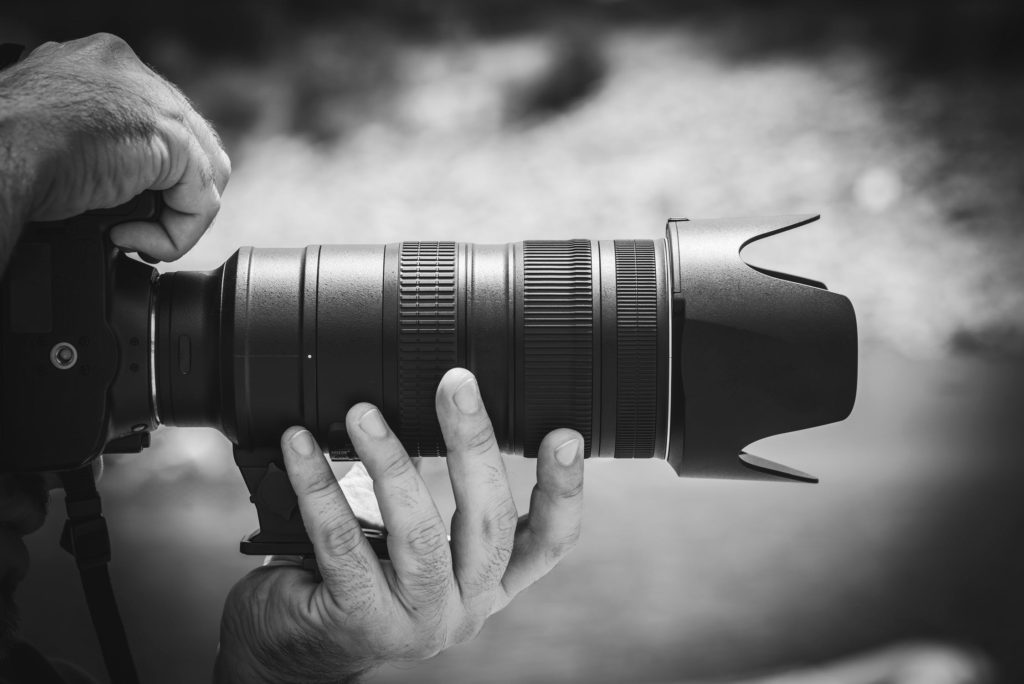 The goal of this post was to answer one simple question: what is the best focal length and aperture for portraits?
The goal of this post was to answer one simple question: what is the best focal length and aperture for portraits?
We’ve answered this clearly above, but can admit that any response you receive on this topic is bound to be subjective.
Our workflows and shooting style have enabled us to find shooting wide open on an 85mm lens to be ideal, but what are some other options out there?
Other focal lengths great for portraits:
- 35mm
- 50mm
- 70mm
- 100mm
- 200mm
It turns out, we actually use a wide range of lenses to shoot portraits!
Our choice tends to come down to context, time restraints, and what type of portrait we want to achieve.
Some examples in practice look like this:
- We’re in a small hotel room and need to shoot some quick groom portraits. There isn’t a lot of space to work with – so our trusted 85mm won’t work in this context. Shooting with a 50mm or 35mm would be preferable here.
- We’re outside in a wide open field, and want to take advantage of the really intense compression that comes from a long focal length lens. We take out our trusted Canon 70-200mm f/2.8 lens and zoom all the way in to 200mm.
- We have 10 minutes to shoot portraits at a wedding where the timeline was thrown off by some unexpected surprises. We want to hit some outdoor and indoor spaces really quick, and would rather not have to change our lenses during this time as it’ll detract from the time we could be spending taking pictures. We put on the 35mm lens as we know we’ll be able to make it work no matter the space we’re shooting, and can get portrait shots with a good chunk of the environment in the frame OR take a few steps closer to the couple and get some more close up shots.
The lenses we use that cover these focal length ranges:
- Canon 35mm f/1.4 II USM Lens
- Canon 50mm f/1.2 II USM Lens
- Canon 100mm f/2.8 Macro Lens (yes – this can be used for portraits!)
- Canon 135mm f/2.0 II USM Lens
- Canon 70-200mm f/2.8 II USM Lens
Achieve sharper portraits with a more narrow aperture
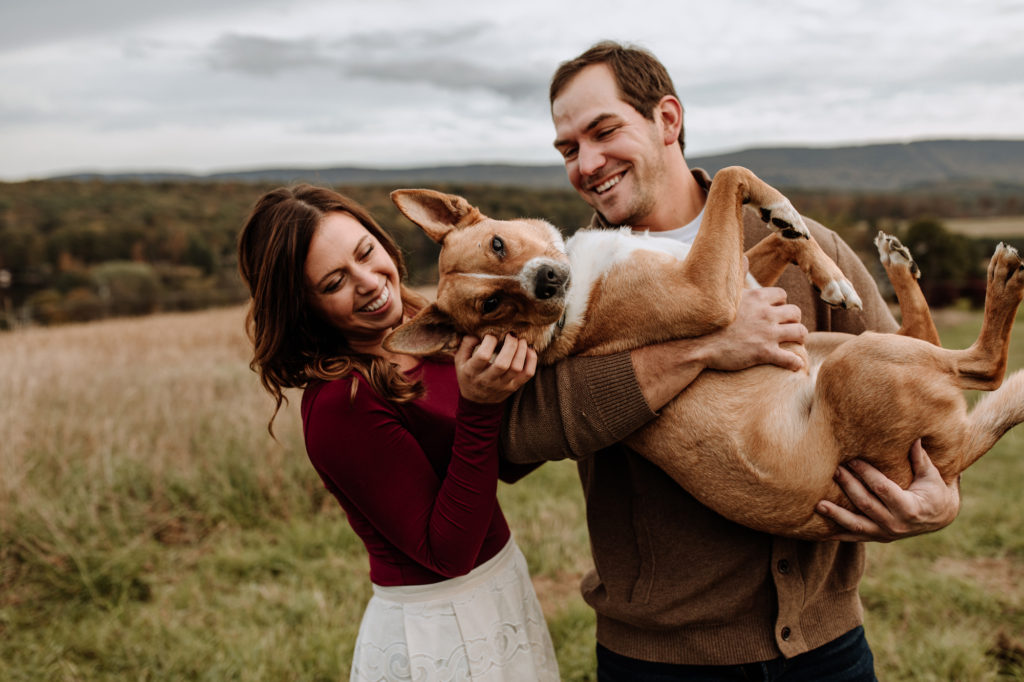 While the first recommendation of most photographers taking portraits will be to use a wide open aperture, it may not make sense in every context. For sure, solo portraits of a single person often benefit heavily from this, but what about if your photographing a pet, a family, a large group of friends, a couple, etc.?
While the first recommendation of most photographers taking portraits will be to use a wide open aperture, it may not make sense in every context. For sure, solo portraits of a single person often benefit heavily from this, but what about if your photographing a pet, a family, a large group of friends, a couple, etc.?
Just like the environment can change what lens we end up using, the actual subject of our photos will also cause changes in our camera settings. Below we have listed some of our “go to” settings for a number of different shooting scenarios with some brief explanations. As you will see, some portrait types will be suitable even for budget lenses with more restrained and narrow apertures!
- Solo portraits. When shooting a single person, it gives you maximum control to really choose any aperture you want. It really comes down to your photographic style here.
- Couples portraits. When there are two people in a scene, you may not want to use the widest aperture on your camera unless you are open to having some softer looking images. We do, however, experiment with this when we want to create depth in a portrait by focusing on one person and blurring the other one out (either a little bit or a whole lot). There is room for experimentation here, but you need to come prepared to switch gears from a wide aperture to a more narrow one depending on the effect you want to achieve. Commonly we’ll shoot anywhere from f/1.0 to f/4 with couples.
- Pet portraits. While taking a picture of a cat or dog (or whatever animal you may have to take pictures of!) will often be interpreted in much the same way as taking a picture of a person, we’ve actually come to learn that sometimes using a slightly higher f-stop will result in better images. The reason for this is because animals do not walk upright. Instead, there head is at the front of their body, and the rest of their body trails behind. So – if I bring my focus on a cat or dogs eye, the background blur of a really wide aperture can end up blurring out some of their body – which frankly looks a little weird. Even shooting at f/2.8 or f/3.5 can help to reduce this effect, but still allow you to create enough depth in your pet photos.
- Family portraits. The one area where portraits begin to require higher f-stops (if you want tack sharp images anyways) is here. When shooting families – normally 3+ people – you need to select an aperture that will allow you to get them all in focus. When everyone is standing in a single horizontal line, this is easy enough as they all are on the same level. However, when you begin to do shots that are more candid, artistically spaced out, etc. to keep everyone in focus you will need to raise your f-stop. For families, we normally begin shooting at f/4 and move it up as needed.
- Large group portraits. Finally, portraits with a lot of people in them – think really large family groupings or shots of people with their friends while on vacation. A lot of times what happens in these conditions is people end up tiered. A few people in front, some people in back. Because of this setup, shooting at a higher f-stop is essential if you want to get everyone in focus. Try starting at f/5.6 and moving up depending on how many people you have.
Want to learn more? Pick up Digital Photography School’s eBook Portraits: Making the Shot
What’s your thoughts on all this?
Do you have a preferred lens, focal length, and/or aperture you stick with for portraits? Share with us in the comments below!